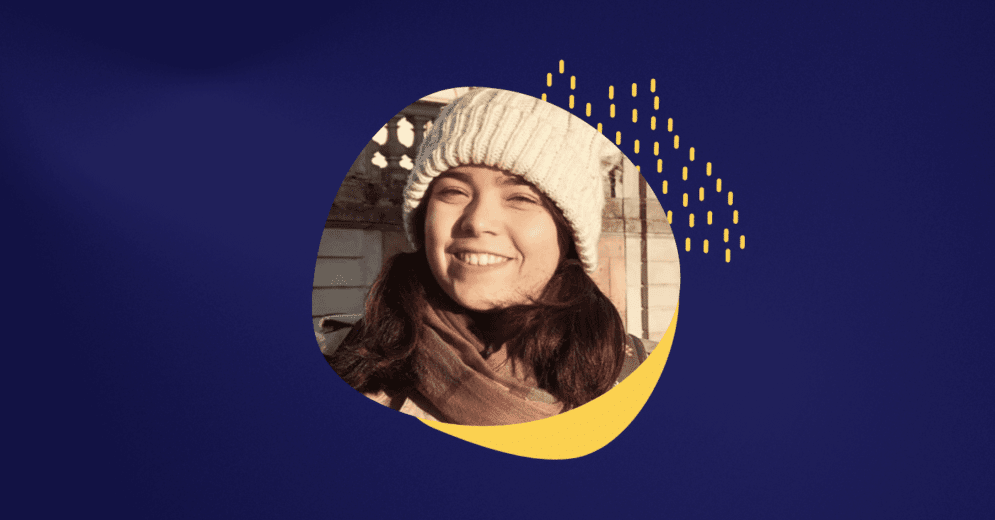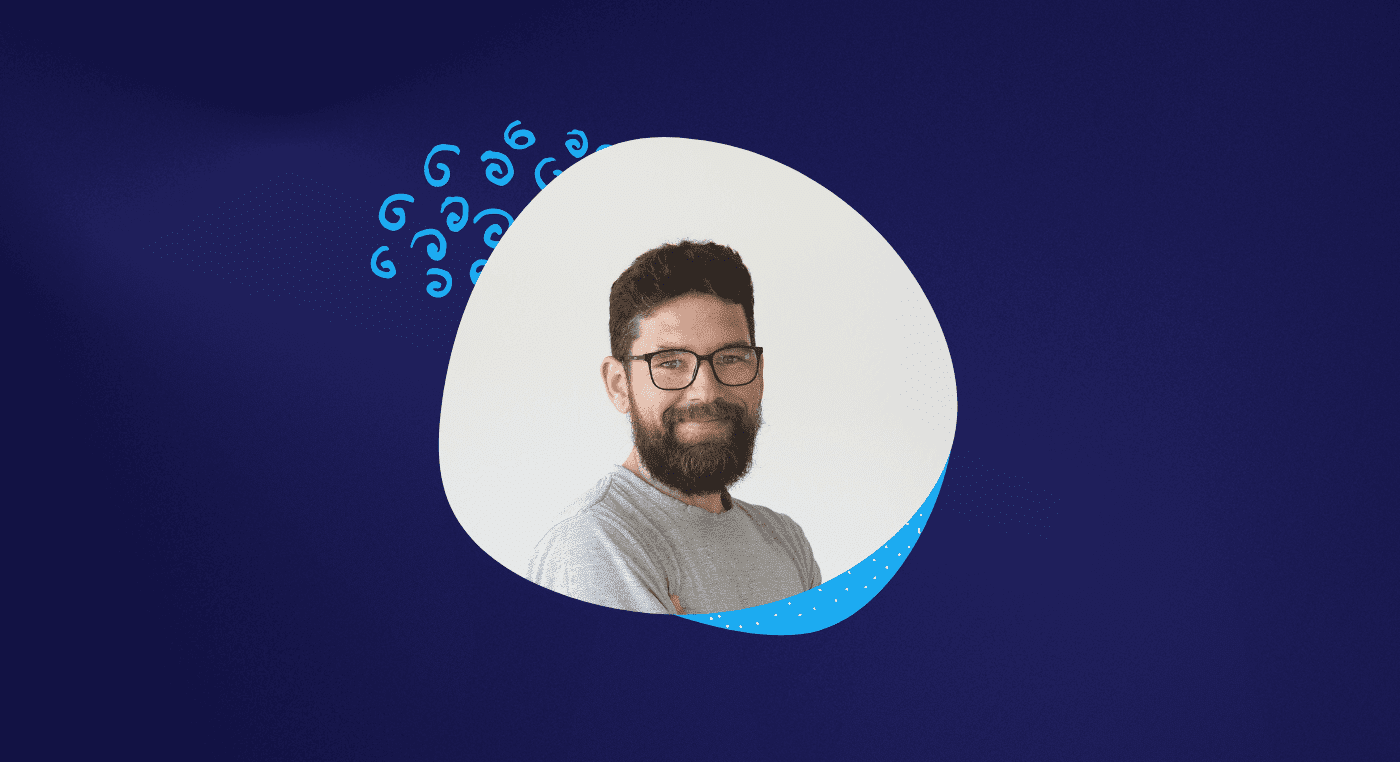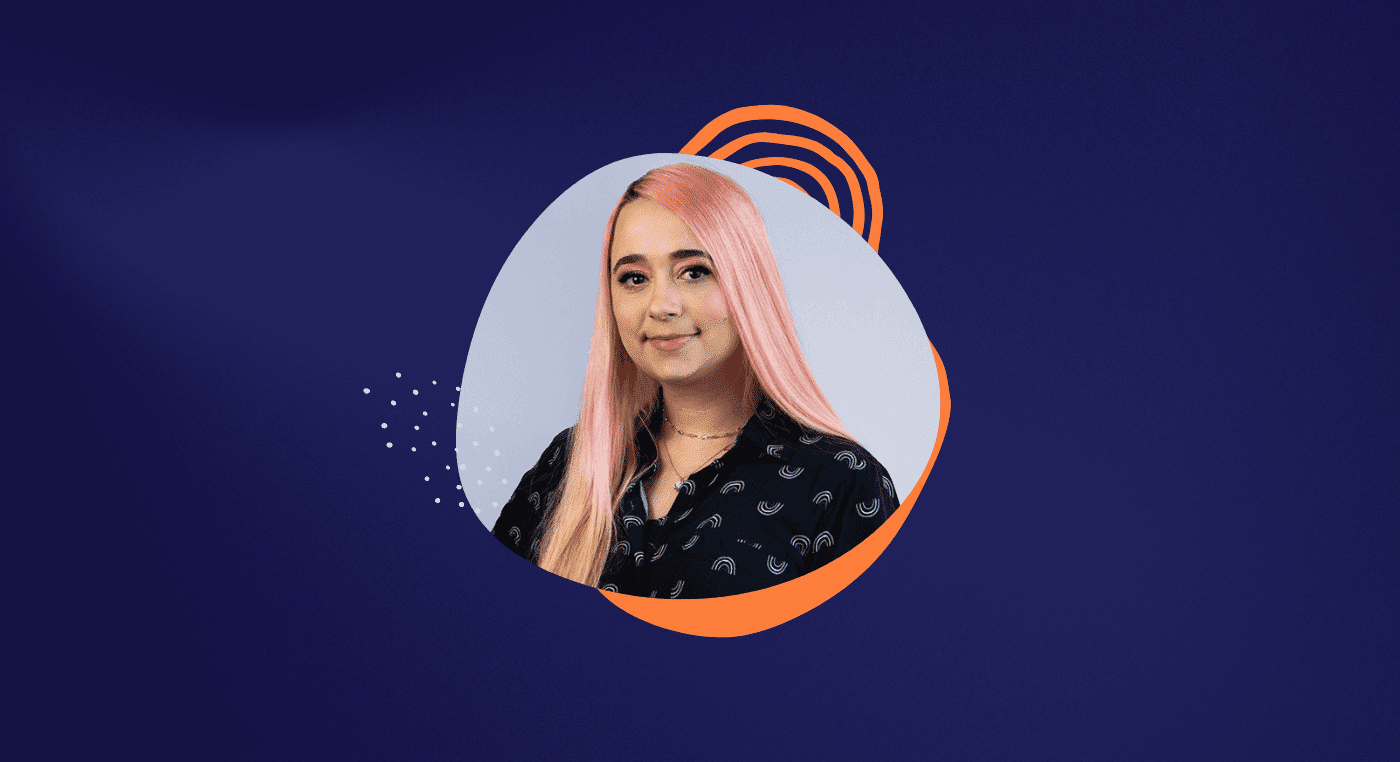In our recent interview, we spoke with Thays, an inspiring individual and a student in our Mastering Interface Design (MID) program.
Thays has always been driven by a thirst for knowledge, constantly seeking ways to expand her horizons. Even while working as a programmer, she embarked on a remarkable path, not only enrolling in our program but also pursuing a Master's in Human-Computer Interaction at the same.
While Thays knew deep down that her career as a developer wasn't fulfilling her completely, it took time for her to muster the courage to make the pivotal decision to transition to UX design.
Today, she thrives as a UX Researcher in Sweden and shares the importance of following what truly makes us happy.
Discovering her passion for UX design has helped her unlock her full potential, allowing her to deliver more meaningful and impactful work.
Join us as we delve into Thays' inspiring story and gain valuable insights from her experiences. Let's dive into the interview!
Thays, welcome! To start off, can you tell us a little bit about yourself?
Thank you, Felipe! I'm from Manaus and have a Bachelor's degree in Computer Engineering. I worked in programming for about 10 years. However, since college, I always felt that I wanted to move more toward the Design area, but due to a lack of courage and financial issues, I ended up delaying this for many years.
But at the same time, I was always studying. In my free time, I took other courses, and a little before the pandemic, I decided to really dedicate myself and take a course to switch careers.
Aela and the Mastering Interface Design (MID) program
In 2019, I took a random basic design course, design 101. And after that, I decided to take a more complete and elaborate course.
That's when, thanks to my Google searches, I discovered Aela. I also started receiving a lot of recommendations for the MID.
I watched your presentation on students' success stories, and I saw that most people seek jobs to work in Europe; I was already living abroad and working as an Android developer, and as there were students with a similar journey, Aela seemed more suitable for me.
Master's in Human-Computer Interaction

At the same time, I applied for a Master's program. It's free here in Sweden. I passed the Master's when I had just finished level zero of the MID, in early 2020.
Although it's level zero, it's quite challenging for those who don't have previous experience in design. I had an idea of the handoff part but not about how the design process was.
For me, it was challenging (the MID) because there was so much back and forth (the students' projects are only approved after careful evaluation by the mentors. Often, a project goes through several improvements before receiving the OK). But I had fun doing it.
So I decided to leave work for a year and focus one year on my studies and then one year back to working and studying. My Master's was in Human-Computer Interaction, so it had a bit of design and a bit of engineering, but I molded my school schedule to be more focused on UX.
I eventually was able to do my thesis at the company I was working for. I had been working as an Android developer for 6 months when I got approval to do the thesis there. And I put together all my learnings to do the thesis.
My thesis was focused on accessibility, with a focus on people with ADHD and dyslexia who use streaming platforms. The company I work for is like a Swedish Netflix, but smaller, and the product is very similar.
Reading Tip: Benchmarking: How To Conduct One?
The right time
I say that I was lucky to be in the right place at the right time. There was an opening for a Developer Experience position in the company; this team is usually very technical. But they decided to hire a UX person for this team to be able to talk to developers, understand their problems, and build tools for them within the company.
So, when they realized that I had the knowledge in UX, a master's degree in the field, and a background in development, they thought, "She is the right person."
And I was already in the company, knew their problems, and was involved in internal improvement processes.
This is a summary of my transition journey and how I became a UX Researcher in the company I work for today.

This issue of luck is curious because it is unfair; luck exists for those who are prepared.
And you were a programmer for 10 years. What was your calling? Why did you decide to transition to UX Design?
I think this is something I have wanted for myself since a long time ago; my childhood dream was to be an architect actually. But at the time, there was no Architecture college in the federal university of my state. So I thought of the second thing I like the most.
And I had my blog; I like HTML, I had already done some animations and worked with Flash, so I went to this field.
I think the first time I felt "I'm on the wrong course" was when I saw an ergonomics fair at the Design department at college.
But there was a whole way to go back, return all the steps, and I was already finishing college. So, this took over me, and I also thought that this desire might be because I was still very junior and that I needed to specialize more.
I pursued a graduate degree in mobile development because it was what I worked with. I was trying to professionalize myself and be better in the programming area.
Talent is being passionate about what you do

I noticed that a good part of the people who are very talented in programming, who are amazing at it, love to do it. They do it in their free time. Not necessarily programming, but these people are always updating themselves on the subject.
And I didn't have that desire. I did it because I needed to make ends meet. But it wasn't because I liked to watch videos about the best technologies for Android.
I thought, "Man, I like UX so much, wouldn’t it be possible to work with it?" then I discovered Daniel Furtado's channel, UXNow. And I found UX increasingly interesting.
I saw that it wasn't so far from my reality because I understood the handoff part, but I didn't understand the previous process, but I found it super interesting.
I was that person who always volunteered to participate in interviews, worked for Samsung for a while, and every time they interviewed employees for some research, I was always there.
I loved participating in the process, interviewing, and seeing how we could improve the product.
Companies like Samsung have those wonderful labs, with those magic mirrors. And I found it incredible, I felt I wanted to be there.
This started to feed the thought that I wasn't so happy with what I was doing. The insecurity came from the fact that I was earning well, was an immigrant, and was working with something that everyone needs.
It is very difficult not to get a job as a programmer here; people beg you to work, and I had this fear of going to a new area and starting as a junior, thus losing the security I had.
Reading Tip: UX Research: A Key Role In Product Design
Learning about your true potential

But I am still young, and I used to think, I am a little over 30 years old and have at least 20 years of career ahead of me, am I going to spend the rest of my life in a career that doesn't satisfy me?
And that's when I started studying the financial part, in my time a junior UX person earned much less than a junior developer. Now I believe it's more balanced, especially here in Sweden, but Brazil is also catching up.
And it depends a lot on the person, if they are competent, and make choices focused on money – which is not so much in my case, but if I want to earn a lot, I know I have to go to a big company, have a senior position, in a design area that pays more. So there are these money-related choice issues.
I wanted to earn the minimum to support myself, but the focus was not on money, it was on the quality of my work. I felt that as a dev (developer) I delivered well, but it wasn't my potential.
I really felt that I go farther doing something else. So when I started studying UX and doing projects in the MID and for my master's degree, I was so excited that I could give my best.
I really like what I do and get excited talking about it. I wasn't as passionate about development as I am about design. I think that was my main motivation. Today it is possible to work with UX Design and earn as well or better than programmers.
Today it's possible to work with UX Design and earn as well as programmers.

Before, your work started after the handoff. Can you describe how your work is now with developers?
As a developer, my work started with the handoff, which is when you receive the UX and UI part – depending on the company you have a different documentation for UX and UI.
So the programmer knows what flows they have to do, and what distances and measurements of each component.
At Samsung, which is a large company, I had a UI documentation that I had to follow to the letter. So handoff is the designers' final delivery.
My conversation with the designers was to understand how a specific component worked, I did the technical part of the implementation and the designer came up with the images that would fit into that format.
Today I am in the research part, at the beginning of everything. I am specifically talking more with developers, but I am also involved in meetings with end users on the platform.
I need to understand what the user needs, and the problems they have and talk to the designers so that this is reflected in the screens.
The user can be either a developer or the end user of the product.
Reading Tip: How to Remain Motivated While Transitioning to UX Design – Interview With Iana Joaquina
And how do you think it is for researchers and designers who want to work in Sweden? How can people improve their chances?
I think it's always about being prepared. The market is still hiring a lot, I see a lot of vacancies for designers here even with this recession they are expecting next year.
In Sweden itself, I see that it depends a lot on the vacancy, they want people who collaborate with the team and people who have experience with the product.
There are many international companies that do not require Swedish, so with English you can get by. If you have the experience to show, you are hired.
In the company I work for, the design team is quite diverse. There are 3 or 4 Swedes, but we are 15, counting researchers and designers. Much of it is from outside, there are many Brazilians. In the research team, we are 5, 2 Brazilians, one Portuguese, one Swedish, and one Filipino.
You can see that the market is very open to people from other countries.

You started your Master's degree while working and studying in the MID program. How did you manage to balance everything?
Do you have any tips for people who don't have much time to study?
I'm one of those people who had to stop at times. However, I learned to respect my own limits this year.
Planning is key, everything that you plan will happen, even if it doesn't turn out exactly how you envisioned it!
My advice is to start small but be consistent. In fact, this was a tip from the Aela community.
By creating strategies like dedicating an hour a day to studying or treating your portfolio as a project, you can make significant progress.
I used this approach with my portfolio: I sent it to several people, gathered feedback, and slowly improved it. In the end, I achieved a lot by taking small steps
Everything goes by so fast. Everyone has 24 hours in a day, and I know that work takes up a lot of time and energy, but it's good to set aside certain times or days and separate some of your time.
Reading Tip: Making Your UX Portfolio Stand Out – Interview With Jonathan Andrade
Hard work pays off
And if you're very close to something, it's worth making that sacrifice, giving that extra push. During a period of time, my weekends were focused on doing my master's degree work.
Of course, this shouldn't be routine, but sometimes, to achieve something that is very important, it's necessary to give that extra push.
One thing we must keep in mind is that only you can fight for your career. No one will take you by the hand.
It was something I fought for a lot this year. Even to change positions, I had to talk to my former manager and my current leader.
If something is very important to you, try to add it to your routine in some way. I had several personal problems during this process, but I don't think we can let problems take over our lives.
Otherwise, you can't move forward and achieve the goals you want. I think this is a matter of balance.

How was it receiving feedback from mentors on your first Product Design project? How did you harvest the best insights from it?
As a developer, I think the most difficult thing was not jumping straight to a solution. In UX, you need empathy and to know the user, to deeply understand their pains.
Everything the user says, you have to do. Sometimes the user doesn't even know what they want, so you have to pay attention to that. You need to solve their problem.
I think that was the hardest part. What helped me was talking to more experienced people.
At the same time, I felt insecure about making the screens. Especially for someone who didn't have a graphic design background or anything more visual. I think that was the most challenging part, and I still struggle with it a bit, I still have a lot to improve on.
Aela helped me a lot with that because I would come up with a solution right away, and I would get the project back with mentors asking, "But what problem are you solving here?" Because I was doing a redesign of what I thought it was. But I was missing things.
And when I delivered the final version, I saw that there were really a lot more things to consider. Doing benchmarking, taking a look at how other people's solutions are, and really understanding what the user wants.
I think this part was a turning point that I needed.

The classic question: What would you say to Thays from the past?
I would tell her to be more confident. Because when I thought about changing, I cared too much about other people's opinions. And I think if I had tried since that time, it would have been less painful.
Because, whether we like it or not, transitioning is not something that everyone risks doing. So trusting more in that inner voice, in that thing that you believe is what you want to do, is important.
Of course, you can't forget that you have bills to pay. It also depends a lot on everyone's ambition, but if you want a comfortable life and know that you can achieve it with what you like, with what you naturally relate to, I think you have to do it.
And UX Design is a career that can give you that. Today, you can have a comfortable life in UX.
Reading Tip: UX Design Portfolio: 6 Essential Tips for Building Yours








